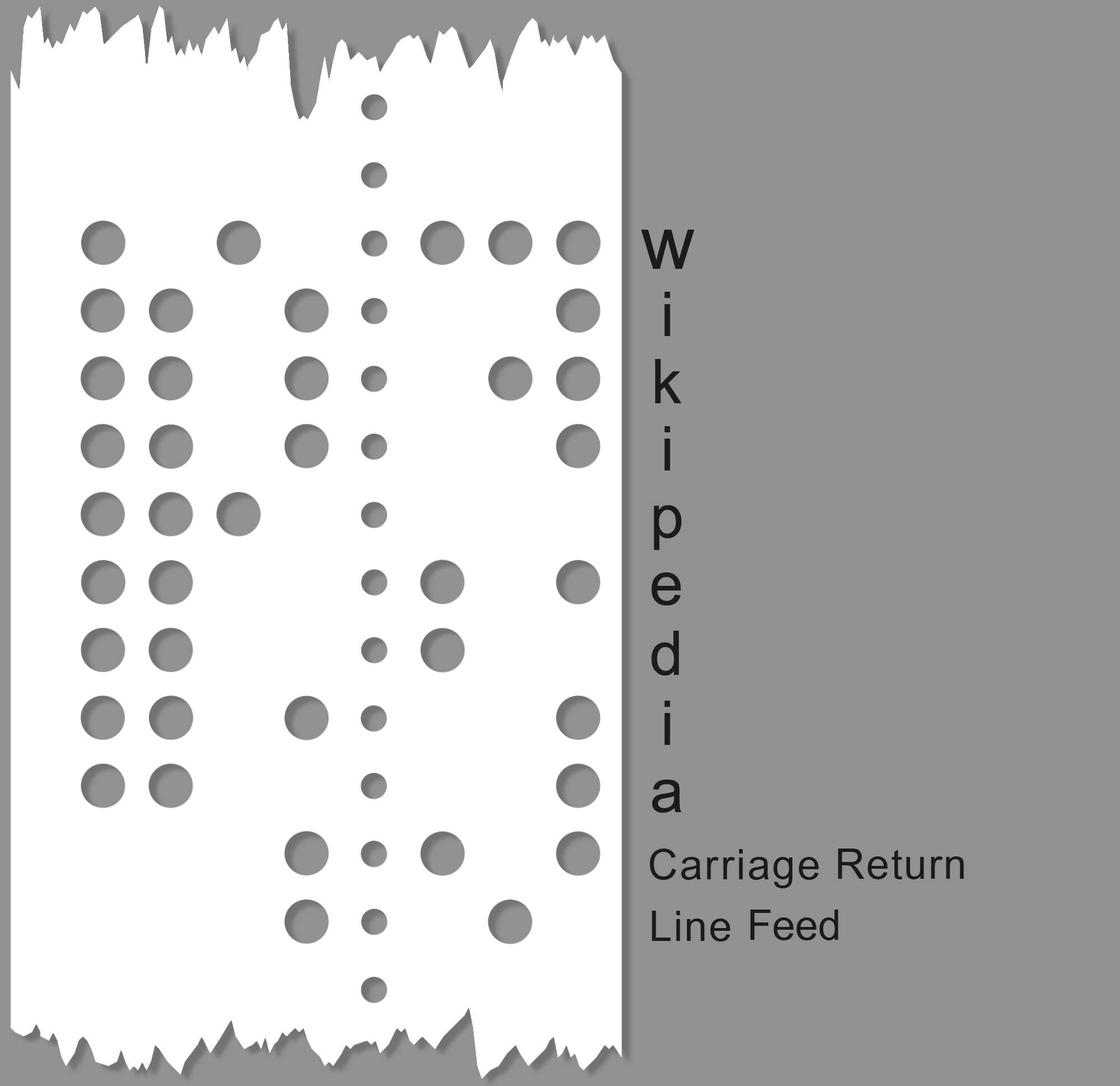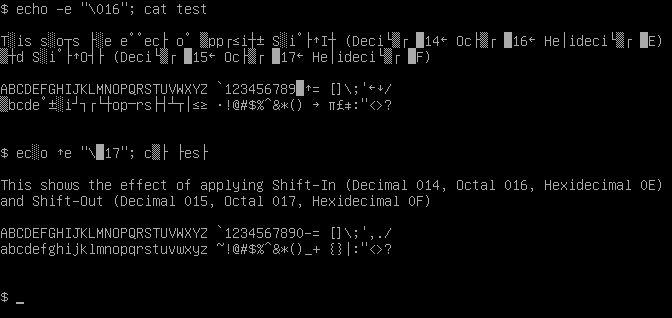|
Double-byte Character
A double-byte character set (DBCS) is a character encoding in which either all characters (including control characters) are encoded in two bytes, or merely every graphic character not representable by an accompanying single-byte character set ( SBCS) is encoded in two bytes ( Han characters would generally comprise most of these two-byte characters). A DBCS supports national languages that contain many unique characters or symbols (the maximum number of characters that can be represented with one byte is 256 characters, while two bytes can represent up to 65,536 characters). Examples of such languages include Japanese and Chinese. Hangul does not contain as many characters, but KS X 1001 supports both Hangul and Hanja, and uses two bytes per character. In CJK computing The term ''DBCS'' traditionally refers to a character encoding where each graphic character is encoded in two bytes. In an 8-bit code, such as Big-5 or Shift JIS, a character from the DBCS is represented wi ... [...More Info...] [...Related Items...] OR: [Wikipedia] [Google] [Baidu] |
Character Encoding
Character encoding is the process of assigning numbers to graphical character (computing), characters, especially the written characters of human language, allowing them to be stored, transmitted, and transformed using computers. The numerical values that make up a character encoding are known as code points and collectively comprise a code space or a code page. Early character encodings that originated with optical or electrical telegraphy and in early computers could only represent a subset of the characters used in written languages, sometimes restricted to Letter case, upper case letters, Numeral system, numerals and some punctuation only. Over time, character encodings capable of representing more characters were created, such as ASCII, the ISO/IEC 8859 encodings, various computer vendor encodings, and Unicode encodings such as UTF-8 and UTF-16. The Popularity of text encodings, most popular character encoding on the World Wide Web is UTF-8, which is used in 98.2% of surve ... [...More Info...] [...Related Items...] OR: [Wikipedia] [Google] [Baidu] |
Half-width Character
In CJK (Chinese, Japanese, and Korean) computing, graphic characters are traditionally classed into fullwidth and halfwidth characters. Unlike monospaced fonts, a halfwidth character occupies half the width of a fullwidth character, hence the name. ''Halfwidth and Fullwidth Forms'' is also the name of a Unicode block U+FF00–FFEF, provided so that older encodings containing both halfwidth and fullwidth characters can have lossless translation to and from Unicode. Rationale In the days of text mode computing, Western characters were normally laid out in a grid on the screen, often 80 columns by 24 or 25 lines. Each character was displayed as a small dot matrix, often about 8 pixels wide, and an SBCS (single-byte character set) was generally used to encode characters of Western languages. For aesthetic reasons and readability, it is preferable for Chinese characters to be approximately square-shaped, therefore twice as wide as these fixed-width SBCS characters. As these w ... [...More Info...] [...Related Items...] OR: [Wikipedia] [Google] [Baidu] |
UTF-8
UTF-8 is a character encoding standard used for electronic communication. Defined by the Unicode Standard, the name is derived from ''Unicode Transformation Format 8-bit''. Almost every webpage is transmitted as UTF-8. UTF-8 supports all 1,112,064 valid Unicode code points using a variable-width encoding of one to four one- byte (8-bit) code units. Code points with lower numerical values, which tend to occur more frequently, are encoded using fewer bytes. It was designed for backward compatibility with ASCII: the first 128 characters of Unicode, which correspond one-to-one with ASCII, are encoded using a single byte with the same binary value as ASCII, so that a UTF-8-encoded file using only those characters is identical to an ASCII file. Most software designed for any extended ASCII can read and write UTF-8, and this results in fewer internationalization issues than any alternative text encoding. UTF-8 is dominant for all countries/languages on the internet, with 99% global ... [...More Info...] [...Related Items...] OR: [Wikipedia] [Google] [Baidu] |
GB 18030
GB 18030 is a Chinese government standard, described as ''Information Technology — Chinese coded character set'' and defines the required language and character support necessary for software in China. GB18030 is the registered Internet name for the official character set of the People's Republic of China (PRC) superseding GB2312. As a Unicode Transformation Format (i.e. an encoding of all Unicode code points), GB18030 supports both simplified and traditional Chinese characters. It is also compatible with legacy encodings including GB/T 2312, CP936, and GBK 1.0. The Unicode Consortium has warned implementers that the latest version of this Chinese standard, GB 18030-2022, introduces what they describe as "disruptive changes" from the previous version GB 18030-2005 "involving 33 different characters and 55 code positions". GB 18030-2022 was enforced from 1 August 2023. It has been implemented in ICU 73.2; and in Java 21, and backported to older ... [...More Info...] [...Related Items...] OR: [Wikipedia] [Google] [Baidu] |
EUC-TW
Extended Unix Code (EUC) is a multibyte character encoding system used primarily for Japanese language, Japanese, Korean language, Korean, and simplified Chinese characters, simplified Chinese (characters). The most commonly used EUC codes are variable-width encoding, variable-length encodings with a character belonging to an compliant coded character set (such as ASCII) taking one byte, and a character belonging to a 94×94 coded character set (such as ) represented in two bytes. The EUC-CN form of and EUC-KR are examples of such two-byte EUC codes. EUC-JP includes characters represented by up to three bytes, including an initial , whereas a single character in EUC-TW can take up to four bytes. Modern applications are more likely to use UTF-8, which supports all of the glyphs of the EUC codes, and more, and is generally more portable with fewer vendor deviations and errors. EUC is however still very popular, especially EUC-KR for South Korea. Encoding structure The structure ... [...More Info...] [...Related Items...] OR: [Wikipedia] [Google] [Baidu] |
EUC-JP
Extended Unix Code (EUC) is a multibyte character encoding system used primarily for Japanese, Korean, and simplified Chinese (characters). The most commonly used EUC codes are variable-length encodings with a character belonging to an compliant coded character set (such as ASCII) taking one byte, and a character belonging to a 94×94 coded character set (such as ) represented in two bytes. The EUC-CN form of and EUC-KR are examples of such two-byte EUC codes. EUC-JP includes characters represented by up to three bytes, including an initial , whereas a single character in EUC-TW can take up to four bytes. Modern applications are more likely to use UTF-8, which supports all of the glyphs of the EUC codes, and more, and is generally more portable with fewer vendor deviations and errors. EUC is however still very popular, especially EUC-KR for South Korea. Encoding structure The structure of EUC is based on the standard, which specifies a system of graphical character set ... [...More Info...] [...Related Items...] OR: [Wikipedia] [Google] [Baidu] |
Variable-width Encoding
A variable-width encoding is a type of character encoding scheme in which codes of differing lengths are used to encode a character set (a repertoire of symbols) for representation, usually in a computer. Most common variable-width encodings are multibyte encodings (aka MBCS – multi-byte character set), which use varying numbers of bytes (octets) to encode different characters. (Some authors, notably in Microsoft documentation, use the term ''multibyte character set,'' which is a misnomer, because representation size is an attribute of the encoding, not of the character set.) Early variable-width encodings using less than a byte per character were sometimes used to pack English text into fewer bytes in adventure games for early microcomputers. However disks (which unlike tapes allowed random access allowing text to be loaded on demand), increases in computer memory and general purpose compression algorithms have rendered such tricks largely obsolete. Multibyte encodings are ... [...More Info...] [...Related Items...] OR: [Wikipedia] [Google] [Baidu] |
Extended Unix Code
Extended Unix Code (EUC) is a multibyte character encoding system used primarily for Japanese, Korean, and simplified Chinese (characters). The most commonly used EUC codes are variable-length encodings with a character belonging to an compliant coded character set (such as ASCII) taking one byte, and a character belonging to a 94×94 coded character set (such as ) represented in two bytes. The EUC-CN form of and EUC-KR are examples of such two-byte EUC codes. EUC-JP includes characters represented by up to three bytes, including an initial , whereas a single character in EUC-TW can take up to four bytes. Modern applications are more likely to use UTF-8, which supports all of the glyphs of the EUC codes, and more, and is generally more portable with fewer vendor deviations and errors. EUC is however still very popular, especially EUC-KR for South Korea. Encoding structure The structure of EUC is based on the standard, which specifies a system of graphical character set ... [...More Info...] [...Related Items...] OR: [Wikipedia] [Google] [Baidu] |
ISO 2022
ISO/IEC 2022 ''Information technology—Character code structure and extension techniques'', is an ISO/IEC standard in the field of character encoding. It is equivalent to the ECMA standard ECMA-35, the ANSI standard ANSI X3.41 and the Japanese Industrial Standard JIS X 0202. Originating in 1971, it was most recently revised in 1994. ISO 2022 specifies a general structure which character encodings can conform to, dedicating particular ranges of bytes ( 0x00–1F and 0x7F–9F) to be used for non-printing control codes for formatting and in-band instructions (such as line breaks or formatting instructions for text terminals), rather than graphical characters. It also specifies a syntax for escape sequences, multiple-byte sequences beginning with the control code, which can likewise be used for in-band instructions. Specific sets of control codes and escape sequences designed to be used with ISO 2022 include ISO/IEC 6429, portions of which are implemented by ANSI.SYS and te ... [...More Info...] [...Related Items...] OR: [Wikipedia] [Google] [Baidu] |
Shift Out
Shift Out (SO) and Shift In (SI) are ASCII control characters 14 and 15, respectively (0x0E and 0x0F). These are sometimes also called "Control-N" and "Control-O". The original purpose of these characters was to provide a way to shift a coloured ribbon, split longitudinally usually with red and black, up and down to the other colour in an electro-mechanical typewriter or teleprinter, such as the Teletype Model 38, to automate the same function of manual typewriters. Black was the conventional ambient default colour and so was shifted "in" or "out" with the other colour on the ribbon. Later advancements in technology instigated use of this function for switching to a different font or character set and back. This was used, for instance, in the Russian character set known as KOI7-switched, where SO starts printing Russian letters, and SI starts printing Latin letters again. Similarly, they are used for switching between Katakana and Roman letters in the 7-bit version of the Jap ... [...More Info...] [...Related Items...] OR: [Wikipedia] [Google] [Baidu] |



